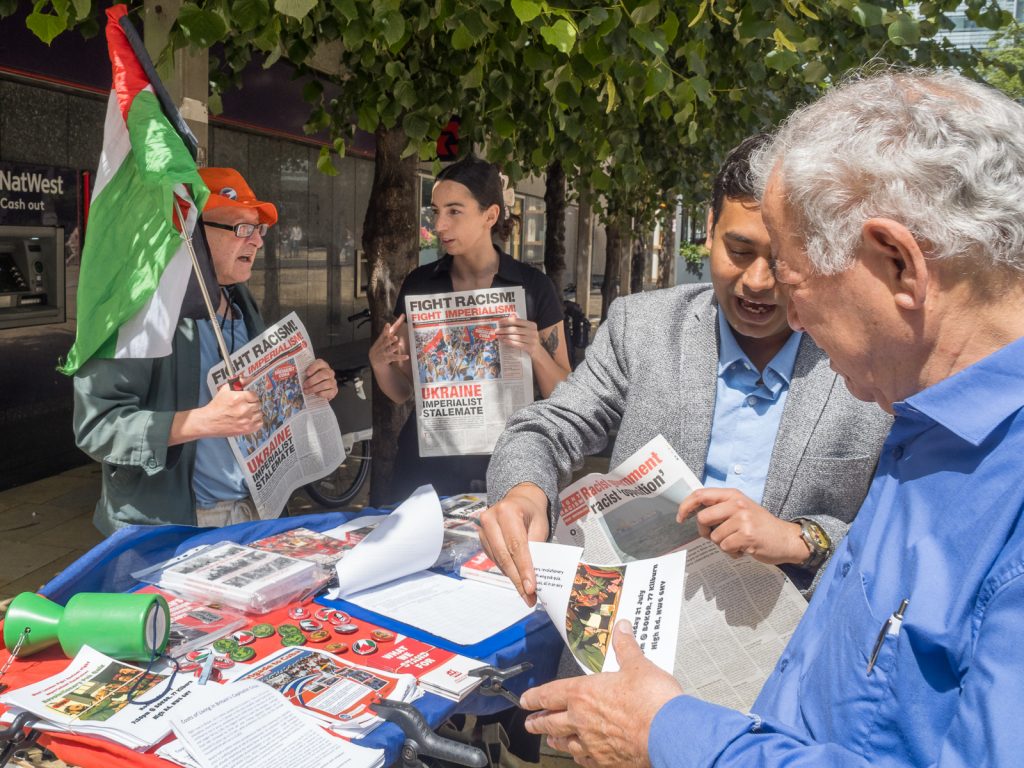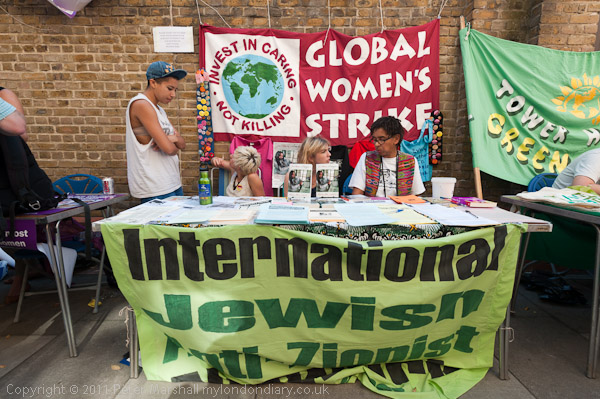Goodbye & Good Riddance – July & August 2023: Some more pictures from my Facebook albums for last year.

Eve Turner, Ealing Save Our NHS, leads some singing. Campaigners from Ealing Save Our NHS celebrated 75 years of the NHS on the side of the main road in front of Ealing Hospital. Speakers called for a proper workforce plan, pointing out the failure of the recent government plan to recognise the realities of an overworked and underpaid system which has been deliberately run into the ground as a pretext for privatisation.
Peter Marshall

Marchers at the Elephant on their way to the Aylesbury Estate. This was one of 16 events across the country on National Housing Day. It demanded Southwark Council stop demolishing council homes and refurbish and repopulate estates to house people and end the huge carbon footprint of demolish and rebuild. They demanded housing for need not corporate greed, refurbishment not demolition, filling of empty homes and an end to the leasehold system.
Peter Marshall

Many thousands of Trans+ and gender-diverse siblings and supporters meet in a wet Trafalgar Square and march to a rally at Hyde Park Corner in a day of trans, intersex, non-binary and gender nonconformity joy, rage and liberation in defiance of the attacks on their community and lives. The ‘Never March Alone’ day called for transgender freedom and equality in the UK and globally and honoured the memory of those killed for being trans.
Peter Marshall

Protesters from the RCG in Hammersmith against the Illegal Migration Bill hand out leaflets and collect petition signatures saying the bill is racist, scapegoating and criminalising migrants and asylum seekers, denying them their basic human rights. The government claims it is compassionate but shows no compassion, intending to imprison migrants regardless and deport them to Rwanda while failing to address the causes of migration.
Peter Marshall

A large rally in Parliament Square organised by members of the British Jewish community sends a message to the Israeli government rejecting their actions and supporting those protesting for the future of their country and children in Israel after the Knesset this week voted to abolish the Reasonableness Doctrine. They call on all who love and care about Israel’s future to defend Israeli democracy.
Peter Marshall

Handing in a letter for the French Ambassador. Campaigners from France and Germany en route to the International Hiroshima-Nagasaki International Fast join British anti-nuclear activists in an “Embassy Walk” to the Russian, French, German Embassies and Downing Street calling on them to sign the UN Treaty for the Prohibition of Nuclear Weapons and get rid of their nuclear weapons. There were performances by Raised Voices choir.
Peter Marshall

Jeremy Corbyn MP holds up and reads from a mug commemorating peace campaigner Bruce Kent. 78 years after the US exploded atomic bombs at the Japanese cities of Hiroshima and Nagaski, London CND met at the Hiroshima Cherry tree in Tavistock Square to remember the over 350,000 people killed immediately or who died from the bombing in the next few months. Speakers called on the UK government to abandon nuclear weapons and sign the UN treaty prohibiting nuclear weapons.
Peter Marshall

A rally at Downing Street demanded Britain leave NATO and end support for its continuing proxy war in Ukraine. Speakers including journalists Tony Gosling and Patrick Henningsen, lecturer Niall McCrae and former British Ambassador to Syria Peter Ford outlined and gave evidence of its anti-Russsian activities since its inception, with Piers Corbyn ending his speech with climate denial, homophobia and ULEZ opposition.
Peter Marshall.
There were relatively few protests in August as many people were on holiday – and I spent some time away from London and protests.
Flickr – Facebook – My London Diary – Hull Photos – Lea Valley – Paris
London’s Industrial Heritage – London Photos
All photographs on this page are copyright © Peter Marshall.
Contact me to buy prints or licence to reproduce.













